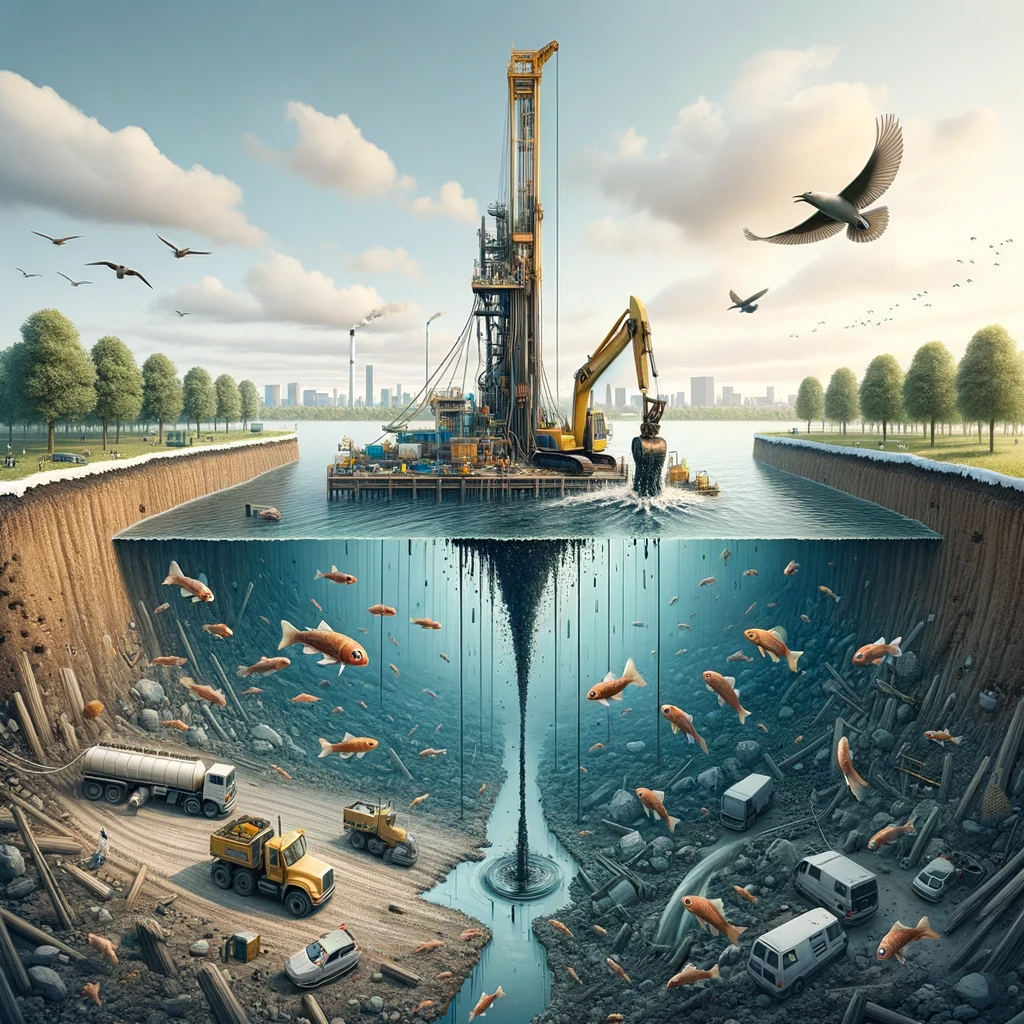The shift towards sustainable construction practices has placed every technique under the environmental microscope, and caisson drilling is no exception. While it has revolutionized the way we lay foundations, what are its environmental repercussions? Let’s dive deep into the ecological aspects of caisson drilling and weigh its impact on our planet.

The Ecological Footprint of Caisson Drilling
To fully understand the environmental implications of caisson drilling, we must first dissect its process and the materials used:
- Soil Disruption: Caisson drilling involves penetrating deep into the ground. This action can disrupt the soil layers, potentially impacting the local ecology, especially in sensitive areas.
- Water Table Impact: Drilling can sometimes pierce aquifers or other underground water sources. If not managed correctly, this can lead to contamination or alteration of the local water table.
- Material Usage: The use of concrete and steel reinforcements in caisson drilling can have an environmental footprint, from the extraction of raw materials to their transportation and use.
The Green Side of Caisson Drilling
While there are concerns, caisson drilling also offers several environmental benefits:
- Less Excavation: Compared to traditional foundations, caisson drilling often requires less excavation. This means reduced soil displacement, less disruption to local habitats, and lower emissions from earth-moving equipment.
- Durability and Longevity: The strength of caissons means structures built on them are often more resilient and long-lasting, reducing the need for repairs or replacements that could have additional environmental impacts.
- Optimal Land Use: By enabling construction in areas with challenging soil conditions, caisson drilling can promote more efficient land use, reducing the need to encroach on undisturbed natural areas.
Balancing Act: Mitigating Environmental Concerns
Several measures can be taken to reduce the environmental impact of caisson drilling:
- Eco-friendly Materials: Using sustainable, recycled, or low-impact materials for the concrete and reinforcements can significantly lower the environmental footprint.
- Water Management: Proper techniques should be employed to avoid contaminating local water sources. This includes using barriers or protective measures when drilling through aquifers.
- Site Assessment: Before drilling, conduct thorough ecological assessments to identify sensitive areas and adjust the drilling process to minimize disruptions.
The Future: Towards Sustainable Caisson Drilling
As the construction industry continues its shift towards sustainability, innovative solutions are emerging to make caisson drilling even more eco-friendly. Researchers are exploring alternative materials, such as eco-concrete, that have a reduced carbon footprint. Additionally, advancements in drilling technology promise to make the process more efficient, with less waste and reduced energy consumption.
Conclusion
Caisson drilling, like all construction methods, has its environmental pros and cons. However, with careful planning, the use of sustainable materials, and continuous technological advancements, its ecological impact can be significantly mitigated. As we strive for a balance between development and environmental stewardship, caisson drilling offers a promising path forward, melding structural integrity with ecological responsibility.






